How To Grow A Birch Tree – ‘A Good Choice For Even The Smallest Of Gardens’

TREES > BIRCH

Elizabeth is a Permaculture Garden Designer, Sustainability Consultant and Professional Writer, working as an advocate for positive change. She graduated from the University of St. Andrews with an MA in English and Philosophy and obtained a Diploma in Applied Permaculture Design from the Permaculture Association.
Reviewed By COLIN SKELLY

Colin is a Horticulturist and Horticultural Consultant with experience in a range of practical and managerial roles across heritage, commercial and public horticulture. He holds the Royal Horticultural Society’s Master of Horticulture award and has a particular interest in horticultural ecology and naturalistic planting for habitat and climate resilience.
Contributions From BEN RASKIN

With 20 years of commercial growing experience under his belt, Ben Raskin is now the Head of Horticulture & Agroforestry at the Soil Association. He is also the author of several gardening books, including Zero Waste Gardening and The Woodchip Handbook. Ben is a full member of the Garden Media Guild.

Nic Wilson is a Garden Writer best known for her work at BBC Gardeners' World Magazine and for her position at The Guardian’s Country Diarist. She is currently writing her memoir and is awaiting the publication of her anthology in the Moving Mountains journal. Nic was shortlisted for the Beth Chatto Environment Award in 2019 and the Spread the Word 2021 Life Writing Prize Longlist.

Jacquie Felix-Mitchell is a Garden Designer who runs her own business, Oasis Garden Design. She trained at RHS Rosemoor for a Certificate in Practical Horticulture and has hosted speaking events at the Chelsea Flower Show. She is also a member of The Chartered Institute of Horticulture.
IN THIS GUIDE
BIRCH GUIDES
Birch trees are beautiful native trees which can find a place in many UK gardens.
They have simple leaves, often borne in pairs on two-leaved lateral branchlets.
“Birch can get quite tall, but it isn’t a dense tree, so it won’t feel too big and its roots won’t spread too much, making it a good choice for even the smallest of gardens,” shares Ben Raskin, an award-winning Horticulturist.
Overview
| Botanical Name | Betula |
| Common Name(s) | Birch |
| Plant Type | Tree |
| Native Area | United Kingdom |
| Hardiness Rating | H7 |
| Foliage | Deciduous |
| Flowers | Catkins |
| When To Plant | Autumn and Winter |
| When To Prune | Late Summer |
Sunlight
Preferred
Full Sun or Dappled Shade
Exposure
Exposed or Sheltered
Size
Height
8-18M
Spread
6-8M
Bloom Time
Spring
Soil
Preferred
Most fertile soils
Moisture
Moist but well drained
pH
Any
Birches are deciduous hardwood trees in the Betula genus.
The Betula genus is in the Betulaceae family, which also includes hazels, hornbeams and alders.1Betulaceae (birch family). (n.d.). Native Plant Trust. Retrieved March 9, 2023, from https://gobotany.nativeplanttrust.org/family/betulaceae/
There are between 30 and 60 known taxa within this genus.
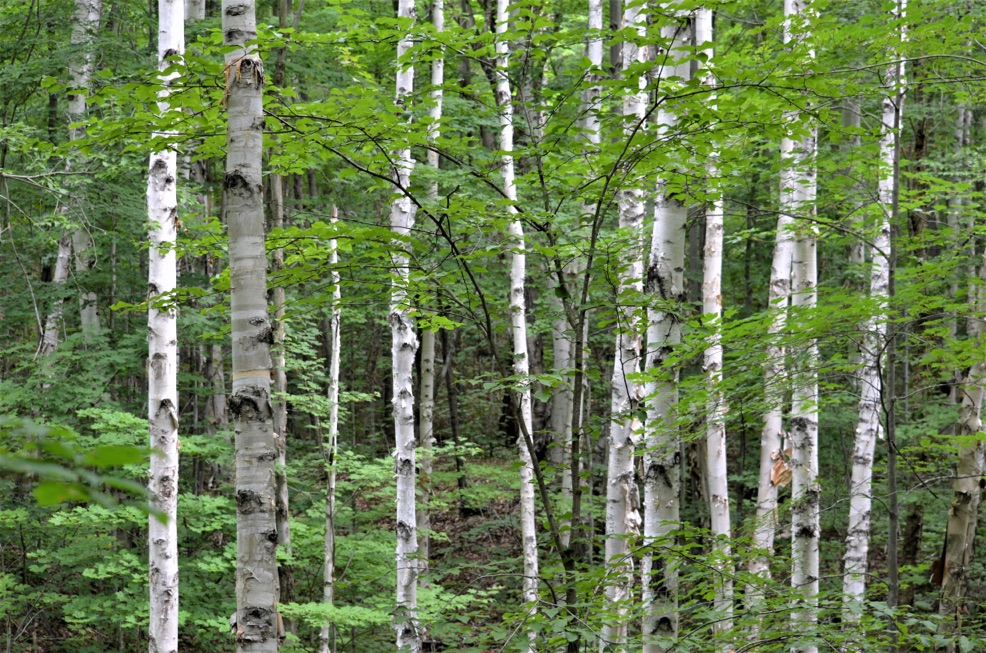
Unlike with alders, the catkins borne on the trees in spring are not woody and break apart at maturity to release their seeds.2How to identify the Silver birch tree (Betula pendula) in a few easy steps. (n.d.). The Conservation Volunteers. Retrieved March 9, 2023, from https://treegrowing.tcv.org.uk/identify/silver-birch
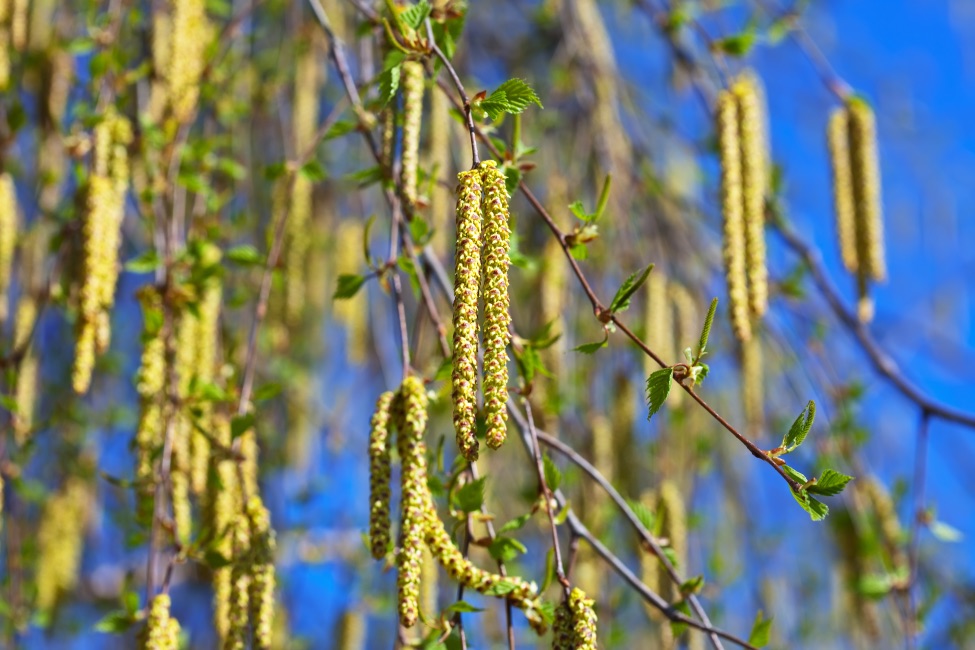
There are two main species of birch native to the British Isles, which we will look at in more depth below.
There are also a number of non-native species which are often grown as garden trees here in the UK.
Why Grow A Birch Tree?
Birch trees are wonderfully ornamental trees to consider growing in your garden.
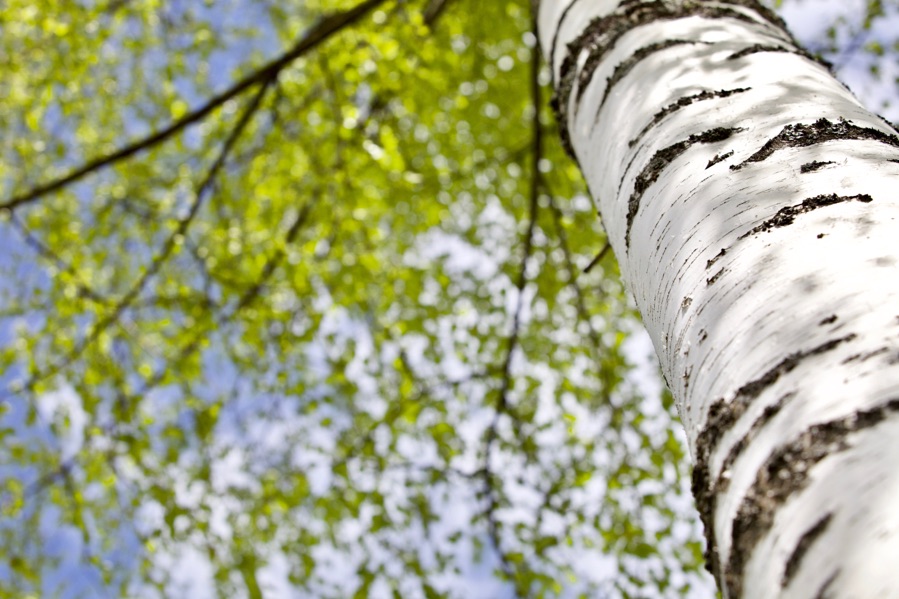
They are attractive all year round, with interest from the bark and form, catkins in spring, and often good autumnal foliage colouration too.
Beyond aesthetic concerns, however, birches can be good choices for a wildlife-friendly, eco-friendly garden.
These are relatively short-lived pioneer species, which often colonise new areas, creating ecosystems where a range of other plant and animal life can thrive.3Birch. (n.d.). Future Trees Trust. Retrieved March 9, 2023, from https://www.futuretrees.org/birch/
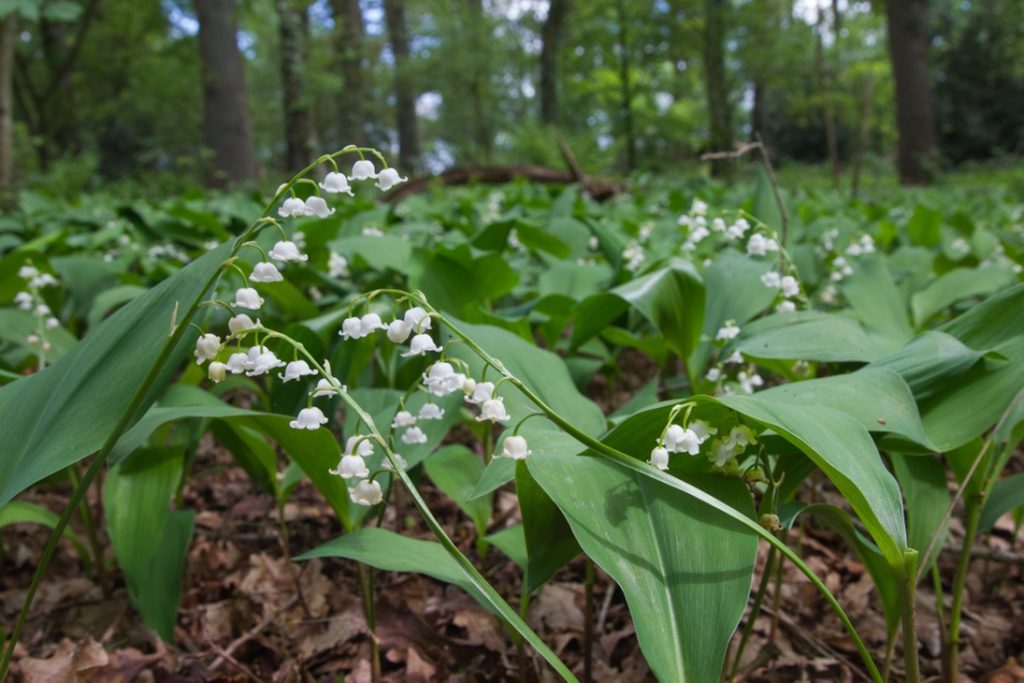
In the wild, birch woods have an open canopy, allowing bluebells, grasses, mosses, violets, wood anemones, wood sorrel, and other woodland species to grow.4Trust, W. (n.d.-c). Silver Birch (Betula pendula). Woodland Trust. Retrieved March 9, 2023, from https://www.woodlandtrust.org.uk/trees-woods-and-wildlife/british-trees/a-z-of-british-trees/silver-birch/
This light-open canopy can also be useful in a garden, allowing for layered planting below the trees, or for the creation of a more naturalistic woodland scheme.
Root action of birches can aid in improving the soil and benefiting other plants growing nearby.
The leaves make good compost and enrich humus on the soil surface when left to decompose.
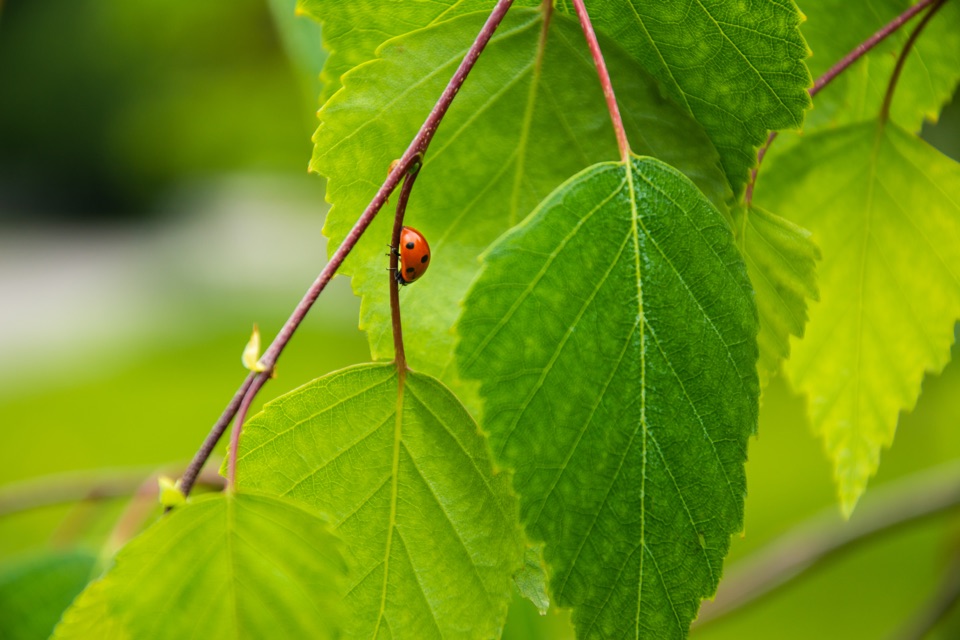
Native birches provide food and habitat for over 300 different insect species, and the aphids and other insects that are attracted to these trees bring, in turn, a range of other species, like ladybirds, which prey on them to your garden.5Birch. (n.d.-b). Guide to Insect Pests of Woody Plants. Retrieved March 9, 2023, from https://www.uky.edu/Ag/Entomology/treepestguide/birch.html
The leaves of birch trees are also food for the caterpillars of many moth species.
Birch trees are also great for birds.
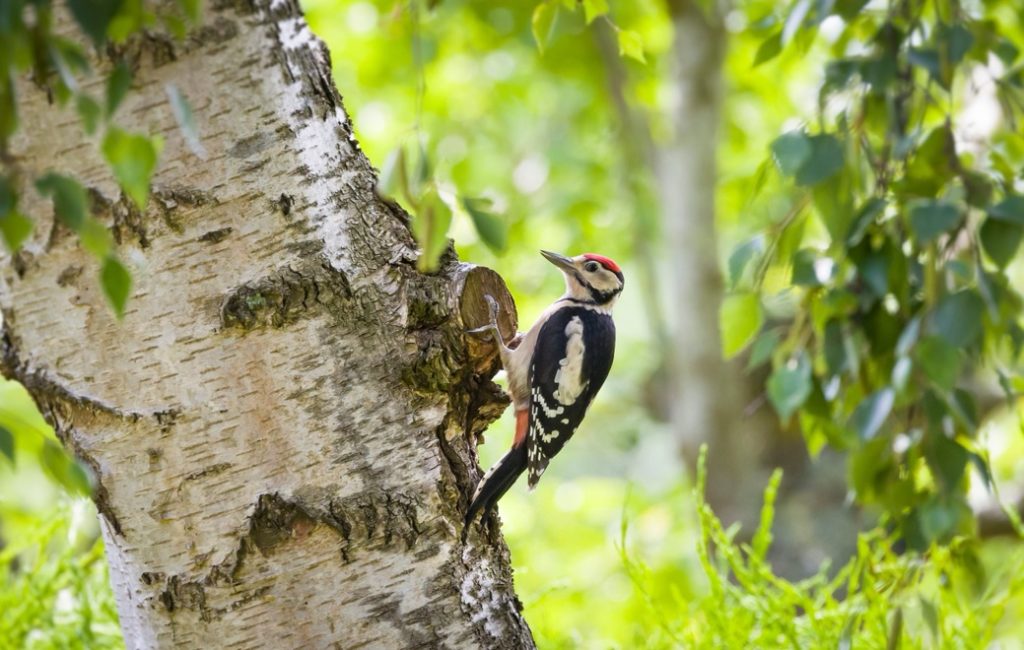
Woodpeckers and other hole-nesting birds may often make their nests in the trunks of birch trees, and the seeds attract and are eaten by species including greenfinches, siskins and redpolls.
Another thing to note is that birch trees can provide a range of useful yields.
Pruned materials of this hardwood have a range of interesting uses in crafts and the trees can potentially be coppiced for a range of uses too.
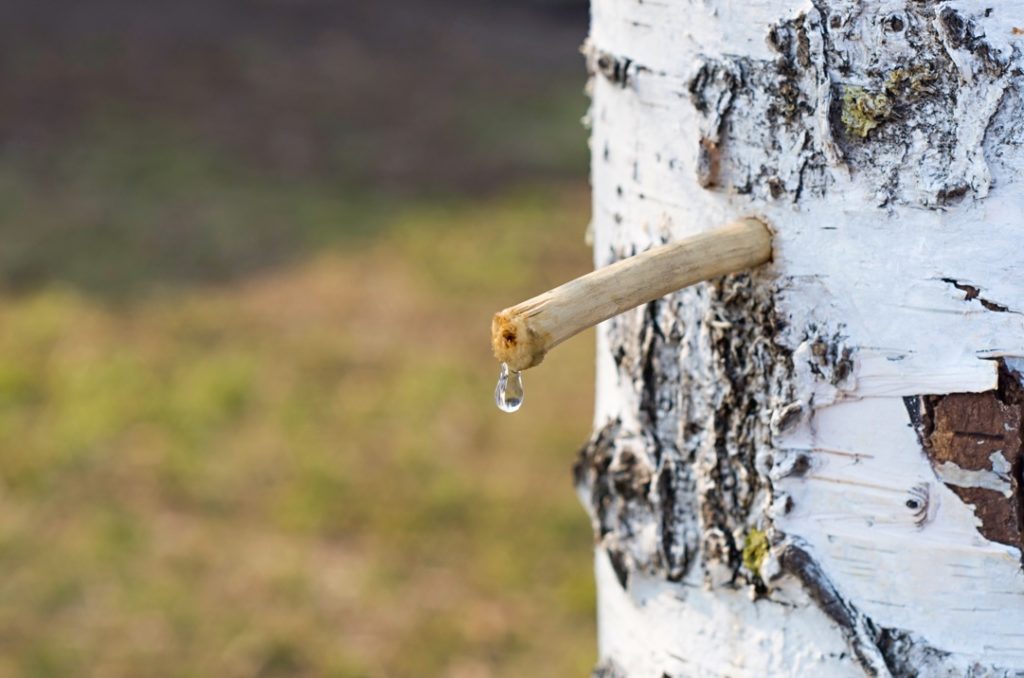
Birch trees are sometimes tapped to collect their sap which makes a refreshing drink, which can also be boiled down to concentrate it into syrup.
Young birch leaves can also be eaten, raw or cooked.6H. (2020b, April 9). Birch, Extremely Versatile with a Tasty Wintergreen Flavoring. Eat the Planet. https://eattheplanet.org/birch-extremely-versatile-with-a-tasty-wintergreen-flavoring/
Birch Varieties
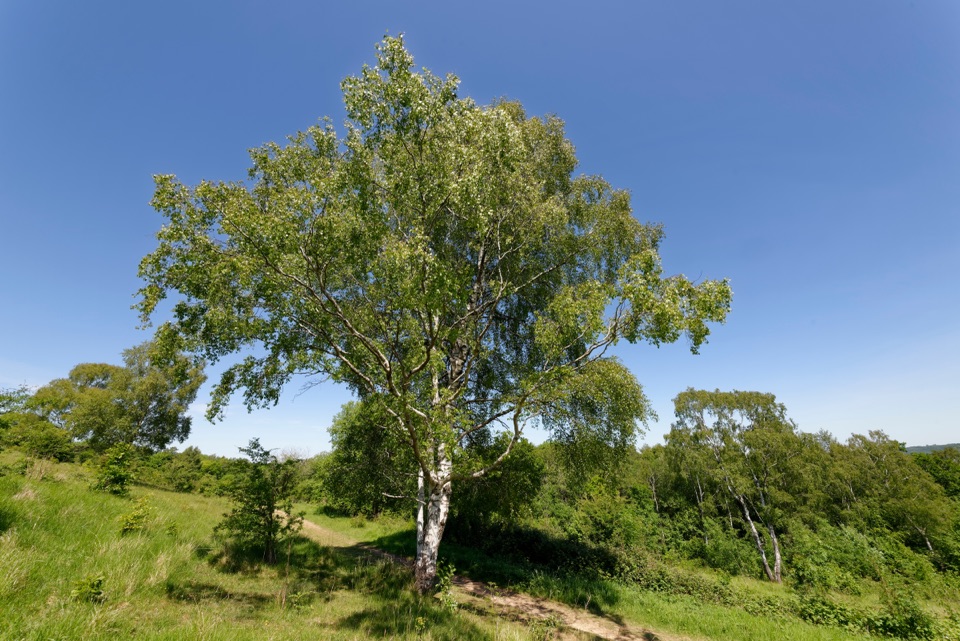
The best birch trees to consider for UK gardens are native birches, which bring benefits for a range of wildlife and provide habitat for a range of native species.7UK Native Trees. (n.d.). Woodland Trust. Retrieved April 25, 2023, from https://www.woodlandtrust.org.uk/trees-woods-and-wildlife/british-trees/native-trees/
The two common native species in the British Isles are the silver birch and the downy birch:
Silver Birch – Betula pendula
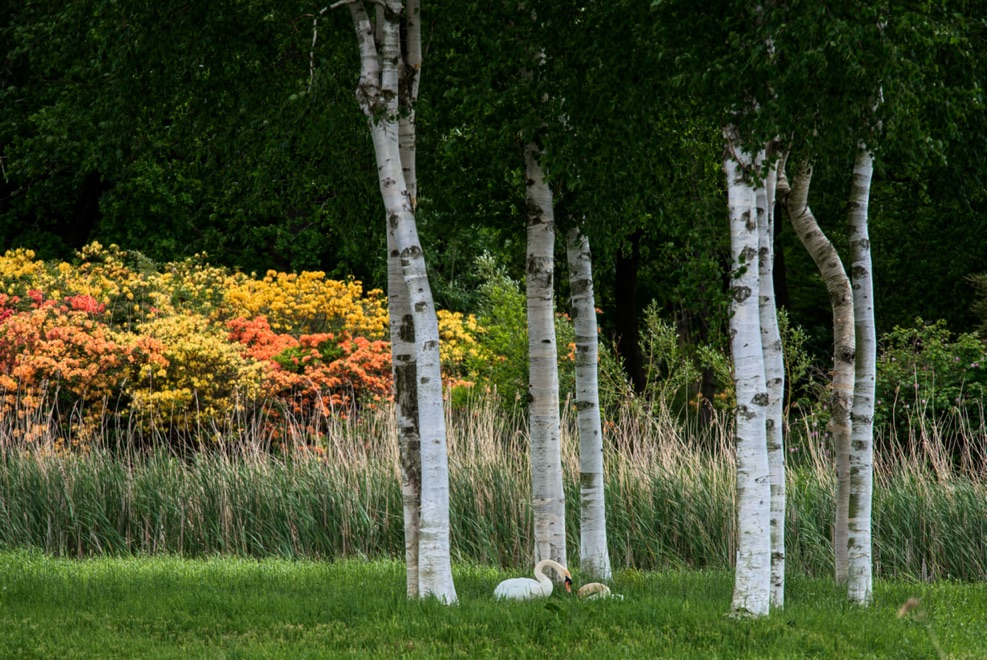
The Silver Birch is an extremely popular garden tree.
It can grow up to around 30m in height and 4-8m wide, and is prized for its attractive and light canopied form, and beautiful papery white bark which sheds in layers and develops interesting patinas as the trees mature.
Attractive yellowish catkins appear on the trees during the spring and, like other birches, foliage can colour well in the autumn months.
“I wouldn’t be without silver birch in my garden,” shares Nic Wilson, a Garden Writer.
“Ours attracts so many birds to the garden and over 300 insect species have been recorded living or feeding on birch. Like many trees, it’s an ecosystem all of its own.”
Downy Birch – Betula pubescens
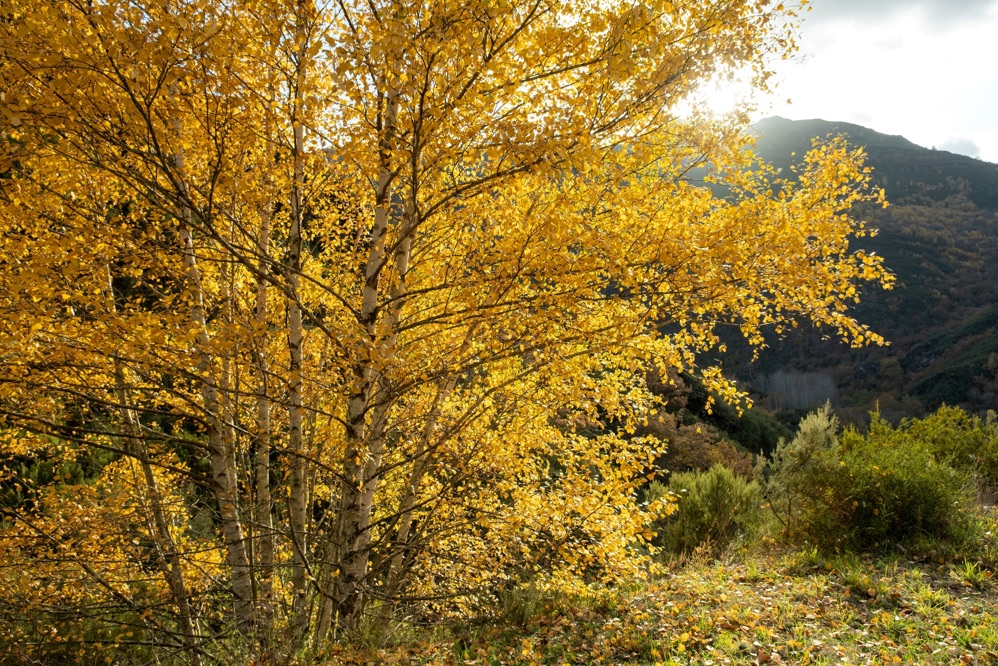
The downy birch is a broadleaf species which grows further north than any other.
Also known as the European White Birch, White Birch, or Hairy Birch, mature trees of this species can also grow up to 30m tall and 4-8m wide.
They have somewhat brownish leaves, without the Silver Birch’s paperiness, and with more obvious horizontal grooves, and form a light canopy with elegant and drooping branches.
The name comes from the downy texture of the leaf stalks, which is not found on silver birches.
Like the above, the downy birch bears yellow-brown catkins in spring and can have good autumn colour.
Non-Native Birches
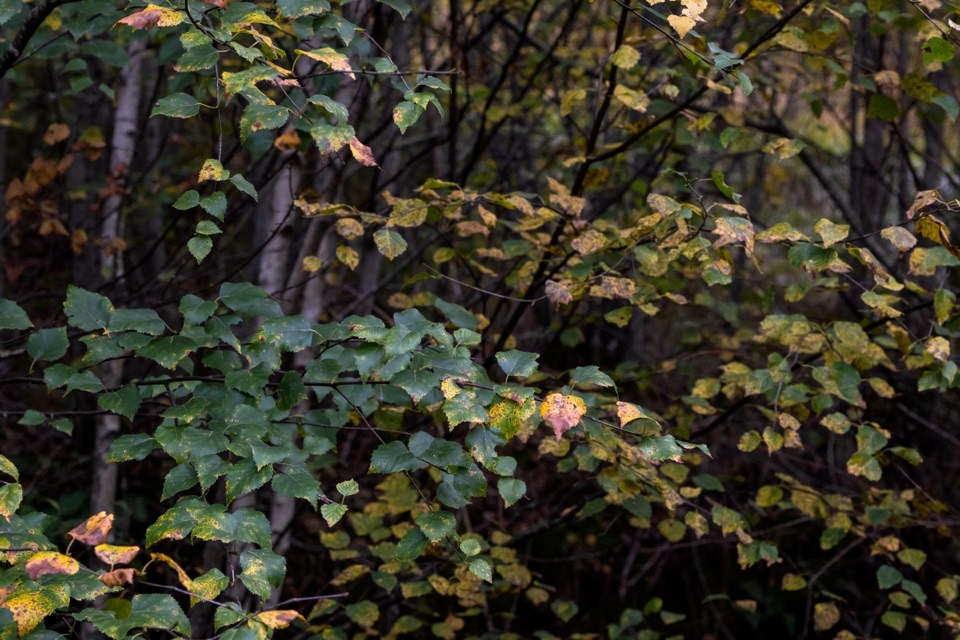
However, while planting native trees is often the best option for eco-friendly gardens, there are also a range of other birches which can be excellent choices for ornamental appeal.
“Since the UK experienced glaciation relatively recently, its flora is relatively sparse compared to areas of the world that did not,” shares Colin Skelly, a Master Horticulturist.
“Utilising near-native (European or North American) or exotic (southern hemisphere) plants extends to the range of plants available to gardeners and is still often a resource for wildlife.”
Some non-native birches often chosen for UK gardens due to their ornamental appeal include:
- Paper Birch (B. papyrifera)
- Himalayan Birch (B. utilis)
- Gold Birch (B. ermanii)
- Gold Bark Birch (B. medwediemii)
“I absolutely love growing Betula utilis,” shares Garden Designer Jacquie Felix-Mitchell.
“This Birch is such a beauty, with a fabulous sense of the ethereal in the winter garden.”
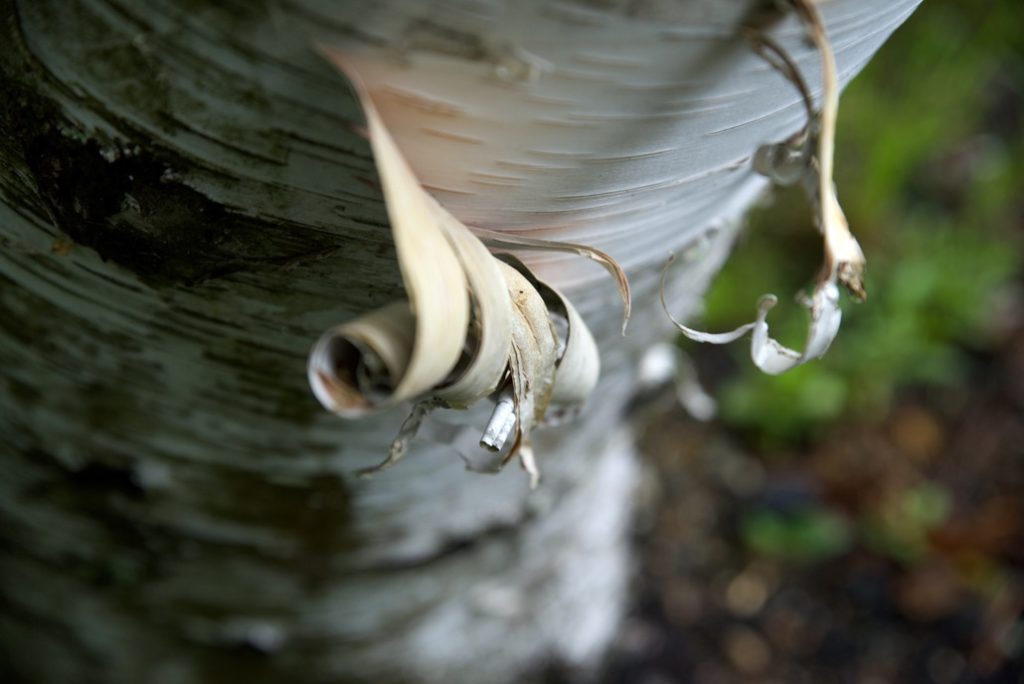
There are examples of all the above which can make great choices, even in smaller gardens.
Where To Grow

Silver birches and white birches both look particularly pleasing when planted in small groups or when cultivated/coppiced as multi-stemmed examples.
Native birch trees prefer a well-drained and fertile loam in a sunny position.
They will not grow well in the shade, but can tolerate almost all soil conditions, including poor soils, sandy soils, and heavy clays.
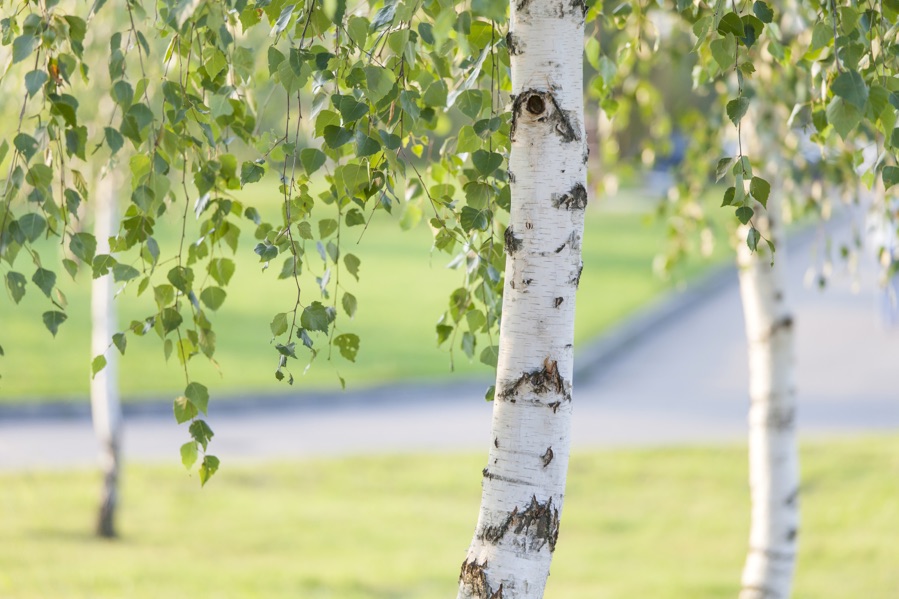
The native birches usually prefer acidic or neutral soil but can also often grow well in alkaline conditions.
Birches are also fully hardy (H7) and can cope with a fairly high degree of wind exposure.
Native birches can be placed on a lawn as specimen trees, form the canopy in a woodland area or forest garden, or even be placed towards the back of garden borders, surrounded by shrubs and herbaceous planting.
Planting Birches
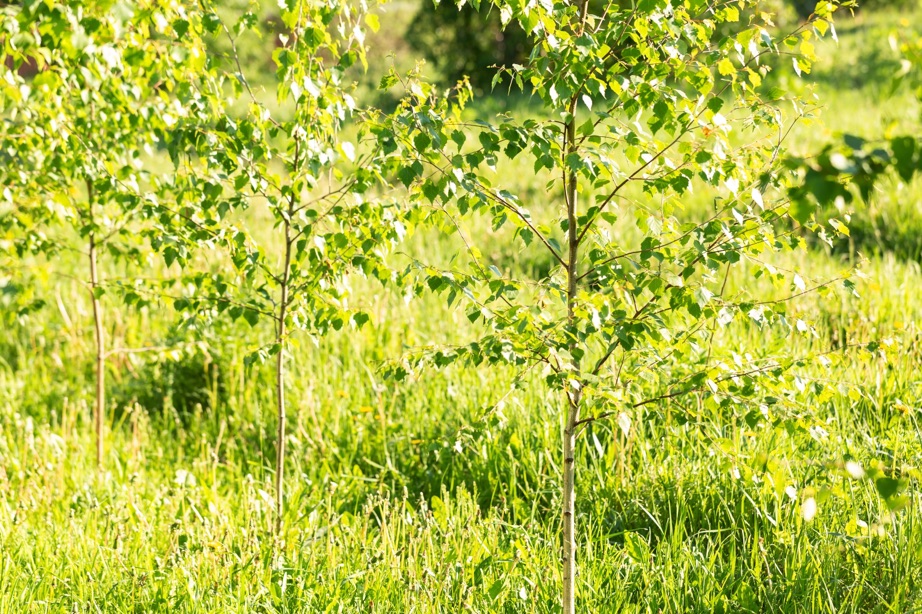
Birch trees can be purchased as saplings or more mature specimens.
These can be purchased as bare root plants over the dormant period (generally the more affordable option) or as pot-grown specimens throughout the rest of the year.
Planting can be done at any time, but it is best to avoid the warmest summer months when transplantation may be trickier and the plants may put be under more stress due to the temperatures and dry conditions.
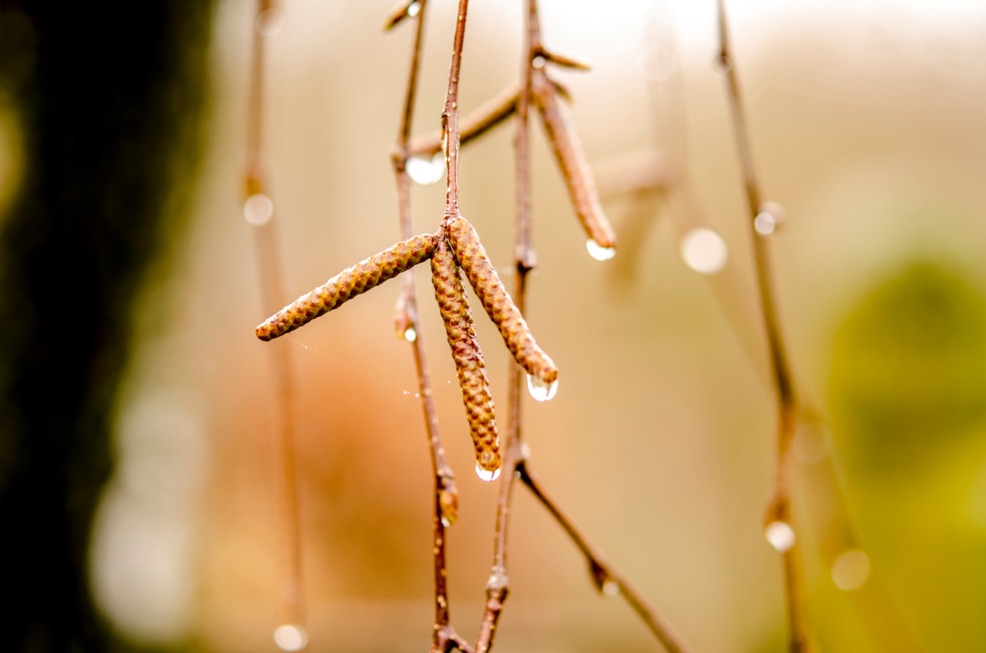
Dig generous planting holes large enough to accommodate the root systems of the new trees, adding a layer of compost or other organic matter to the planting hole before you plant your tree.
Place the rootball in your planting hole, making sure that the tree is planted to the same depth.
Fill back the soil around the tree and water it in well; add a generous mulch of organic matter around the tree.
Birch Tree Care
Watering
Water your birch trees well until they become established, after which time, when they are well-rooted, natural rainfall should be sufficient.
Feeding
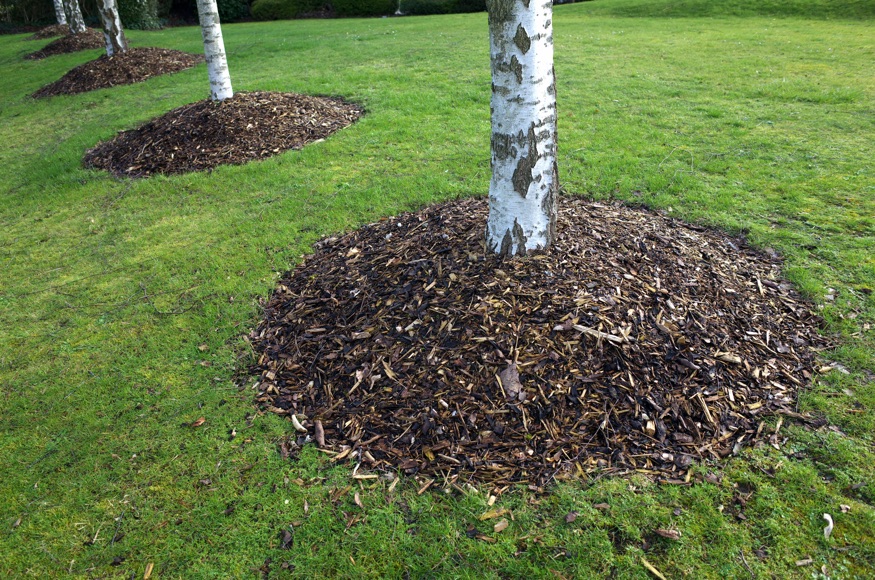
Additional feeding is not required, but it is a good idea to replenish the organic mulch around the base of your birch trees each spring.
Pruning
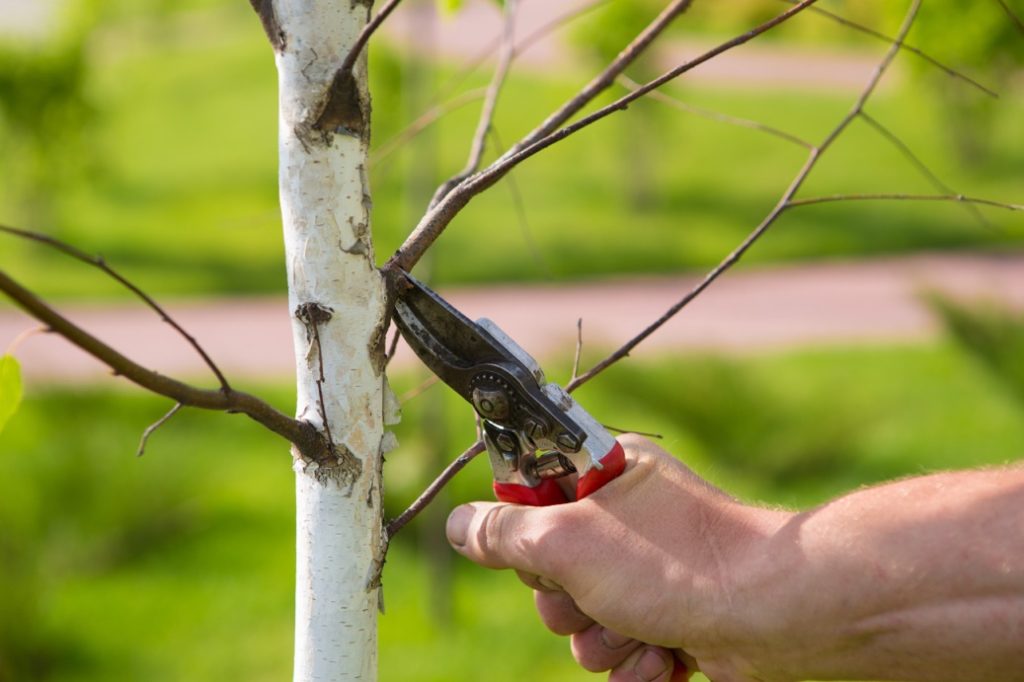
Birch trees should absolutely only be pruned when fully dormant between early autumn and the middle of winter.
Pruning at any other time will make the trees bleed sap heavily, even in late winter when the sap of other trees may not have yet risen.
Established trees do not need regular pruning, and hard pruning is not recommended.
However, removing damaged wood, or crossing branches can be beneficial (and these may be useful for a range of projects too).
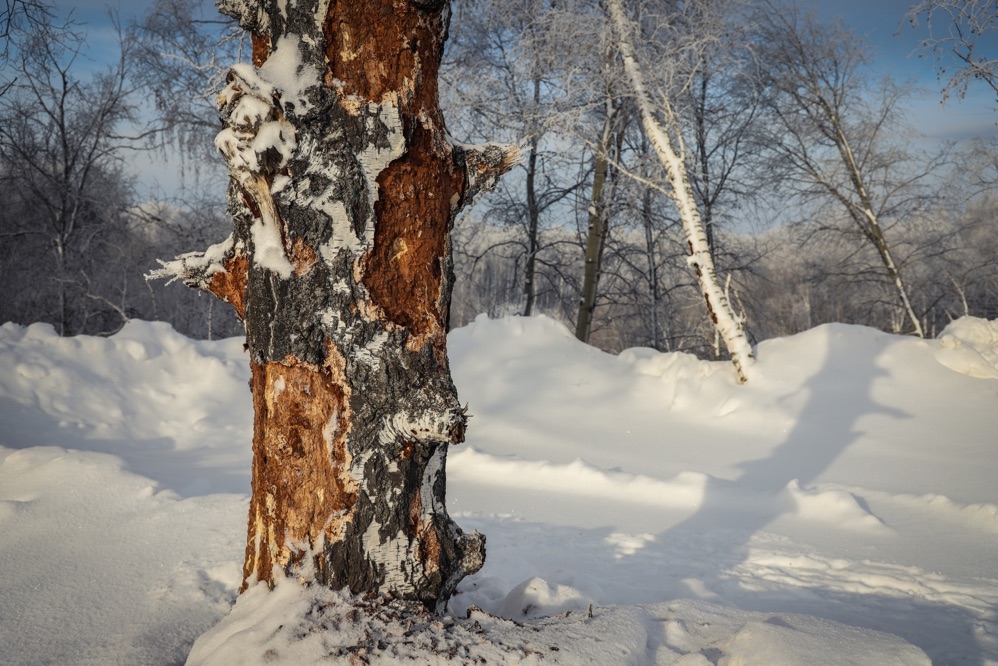
If you wish to make a multi-stemmed birch, choose a young plant no more than around a metre tall and cut it horizontally close to ground level (at around 10cm) or to around 30-60cm or so above the ground.
This cut should stimulate dormant buds which will grow up strongly the following year.
After a couple of years, you may wish also to restrict the number of main stems by choosing a few well-spaced ones to keep, cutting out the rest down to the base.
Bark Care
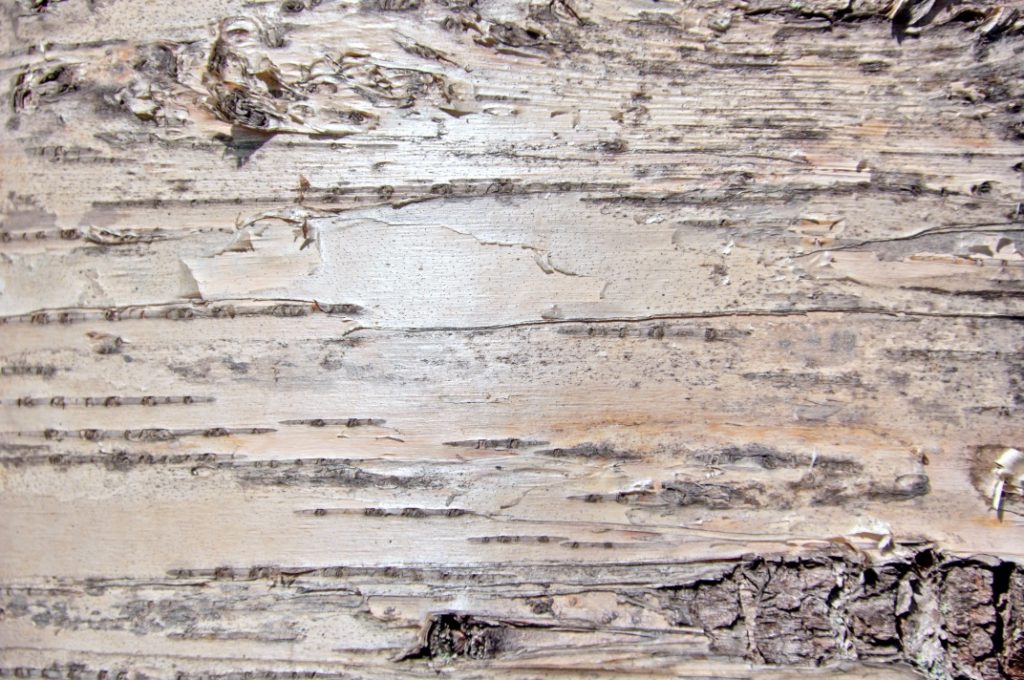
Many birches are chosen for their attractive peeling bark, but if some loose bark is getting a little tatty, you may remove some of it.
Just make sure that you do not remove too much, or go too far, as this may damage the living tissues of the tree just below the surface.
If you wish to show off pale-coloured bark to best effect, you can clean off some green algae from the main trunk with a soft, wet cloth.
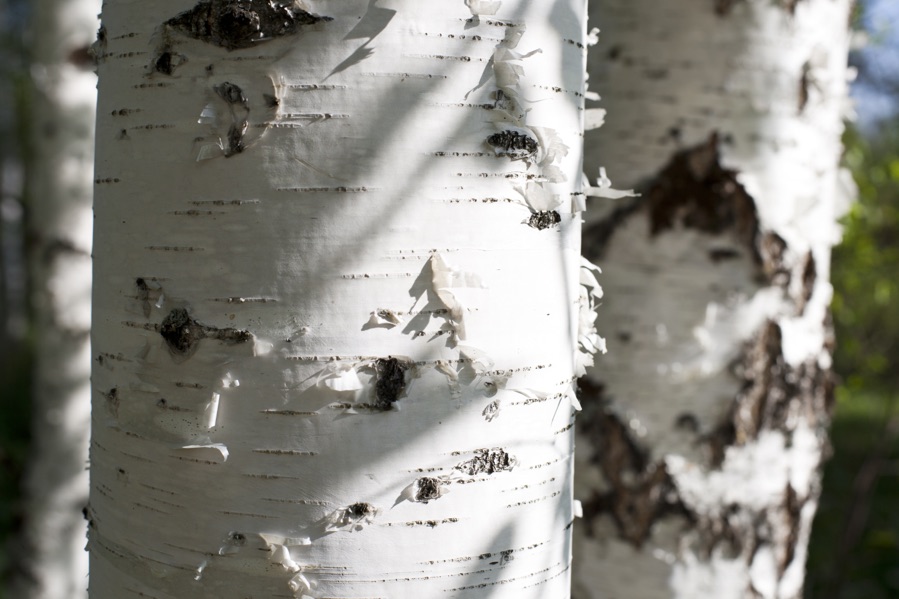
This won’t harm the tree and the algae will quickly return.
However, make sure that you don’t disturb the lichens and mosses which may grow from outlying branches, as these are a crucial part of your garden’s ecosystem.
Birch trees make wonderful additions to a healthy, productive and beautiful garden, so you should definitely consider growing at least one where you live.
References
- 1Betulaceae (birch family). (n.d.). Native Plant Trust. Retrieved March 9, 2023, from https://gobotany.nativeplanttrust.org/family/betulaceae/
- 2How to identify the Silver birch tree (Betula pendula) in a few easy steps. (n.d.). The Conservation Volunteers. Retrieved March 9, 2023, from https://treegrowing.tcv.org.uk/identify/silver-birch
- 3Birch. (n.d.). Future Trees Trust. Retrieved March 9, 2023, from https://www.futuretrees.org/birch/
- 4Trust, W. (n.d.-c). Silver Birch (Betula pendula). Woodland Trust. Retrieved March 9, 2023, from https://www.woodlandtrust.org.uk/trees-woods-and-wildlife/british-trees/a-z-of-british-trees/silver-birch/
- 5Birch. (n.d.-b). Guide to Insect Pests of Woody Plants. Retrieved March 9, 2023, from https://www.uky.edu/Ag/Entomology/treepestguide/birch.html
- 6H. (2020b, April 9). Birch, Extremely Versatile with a Tasty Wintergreen Flavoring. Eat the Planet. https://eattheplanet.org/birch-extremely-versatile-with-a-tasty-wintergreen-flavoring/
- 7UK Native Trees. (n.d.). Woodland Trust. Retrieved April 25, 2023, from https://www.woodlandtrust.org.uk/trees-woods-and-wildlife/british-trees/native-trees/
